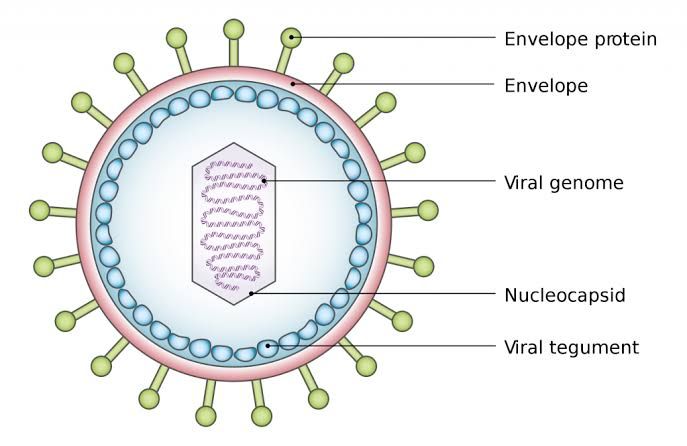
Structure of the Viral Genome
Viruses possess a variety of genome structures, which can be classified into two main categories: DNA and RNA. The viral genome can be either single-stranded (ss) or double-stranded (ds), and it can also vary in size and complexity.
DNA Content of Viral Genomes
- Double-Stranded DNA Viruses: These viruses have genomes composed of two complementary strands of DNA. Examples include Herpesviridae and Adenoviridae.
- Single-Stranded DNA Viruses: These viruses contain a single strand of DNA. An example is Parvoviridae.
The structure of the viral genome plays a crucial role in how the virus replicates and interacts with host cells.
Positive Strand RNA Viruses
Positive strand RNA viruses have genomes that can directly serve as mRNA for protein synthesis upon entering a host cell. This means that their genetic material is immediately translatable into proteins by the host’s ribosomes. Examples include:
- Poliovirus
- SARS-CoV-2
These viruses typically have simpler replication cycles compared to negative strand RNA viruses since they do not require additional steps to convert their RNA into a usable form.
Negative Strand RNA Viruses
Negative strand RNA viruses possess genomes that are complementary to mRNA, meaning they must first be transcribed into positive-sense RNA before translation can occur. This requires the virus to carry its own RNA-dependent RNA polymerase within its structure. Examples include:
- Influenza Virus
- Rabies Virus
The necessity for transcription adds complexity to their replication process, making them generally more challenging to target with antiviral therapies.
Segmented and Multipartite Viral Genomes
- Segmented Genomes: Some viruses have segmented genomes, meaning their genetic material is divided into separate pieces or segments. Each segment may encode different proteins. An example is the Influenza virus, which has eight segments.
- Multipartite Genomes: In contrast, multipartite viruses have their genetic material distributed across multiple distinct molecules rather than segments of one molecule. An example includes some plant viruses like the Tobacco mosaic virus.
Both segmented and multipartite genomes allow for greater genetic diversity through reassortment during co-infection events.
Virus Mutants
Mutations in viral genomes can arise due to errors during replication or as a response to selective pressures from host immune systems or antiviral drugs. These mutants can exhibit various phenotypes, including changes in virulence, transmissibility, or resistance to treatments.
Genetic and Non-Genetic Interactions Between Viruses
Viruses can interact genetically through recombination or reassortment when co-infecting a host cell, leading to new viral strains with altered properties. Non-genetic interactions may involve competition for resources within the host or interference mechanisms where one virus inhibits the replication of another.
Reverse Transcription and Transposition
Reverse transcription refers to the process by which certain viruses (notably retroviruses like HIV) convert their RNA genome back into DNA after entering a host cell using an enzyme called reverse transcriptase. This newly formed DNA integrates into the host’s genome, allowing for persistent infection.
Transposition involves segments of DNA moving within or between genomes, which can contribute to genetic diversity among viral populations but is less common in typical viral life cycles compared to cellular organisms.
In summary, understanding these aspects of viral genetics provides insight into how viruses evolve, replicate, and interact with hosts, which is crucial for developing effective antiviral strategies and vaccines.







